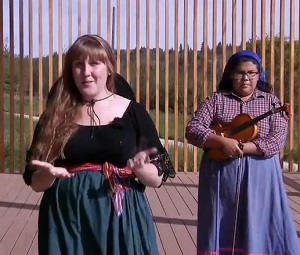
DVD
|
Métis Culture and Traditions
Copies
1 Total copies, 1 Copies are in,
0 Copies are out.
Subjects
Métis--Canada--Social life and customs.
Métis--Canada--History.
Social Studies, Heritage and Identity, Grade 6: Communities in Canada, Past and Present
Social Studies, History, Grade 8: Creating Canada 1850-1890
Expressions of FNMI Cultures, Grade 9 NAC1O
FNMI in Canada, Grade 10 NAC2O
Canada: History, Identity and Culture, Grade 12
Louis Riel Day
Métis--Canada--History.
Social Studies, Heritage and Identity, Grade 6: Communities in Canada, Past and Present
Social Studies, History, Grade 8: Creating Canada 1850-1890
Expressions of FNMI Cultures, Grade 9 NAC1O
FNMI in Canada, Grade 10 NAC2O
Canada: History, Identity and Culture, Grade 12
Louis Riel Day
Language
English
Series
Dimensions
4 3/4 in.







